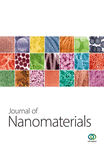Fabrication and Applications of Electrospun Nanofibers
Industrialization of nanofibers has been the hottest topic in the whole world because of the various advanced applications of nanofibers in electronic, catalytic, and hydrogen-storage systems, invisibility device (e.g., stealth plane), photonic structures, sensors, medicine, pharmacy and drug delivery, adsorption, separation, filtering, catalysis, fluid storage and transport, electrode materials, radiation protection, medical implants, cell supports, and others [1, 2]. Many highly high-tech enterprises appeared recently in China for mass production of nanofibers, for example, Nantong Bubbfil Nanotechnology Company Limited. Though the remarkable progress in nanotechnology, there are still some open problems to be solved.
(1) What Is the Definition of Nanofibers? There is a confused use of nanofibers in the open literature. What is the correct definition of nanofibers? Li and He [3] define that any materials behaving unlike their mother materials when the size of materials tends to nano/microscales and having obvious nanoeffects [4] are called nanomaterials. Nanofibers are nanomaterials that have a large length-diameter ratio.
(2) Effect of Nanoeffects of Nanofiber on Various Applications. When nanofibers are applied in various fields, many astonishing nanoeffects are predicted, for example, extremely high efficiency in reaction or permeability [4]. Majumder et al. found that liquid flow through a membrane composed of an array of aligned carbon nanotubes is 4 to 5 orders of magnitude faster than would be predicted from conventional fluid-flow theory [5].
(3) Industrialization of Nanofibers. Electrospinning is not valid for mass production of nanofibers due to its very limited throughput. The mechanism for mass production has been studied, but only few can be used in industry. The Bubbfil spinning process by Nantong Bubbfil Nanotechnology Company Limited is the most advanced nanotechnology so far, which uses polymer/melts’ bubbles instead of solutions/melts for mass production of nanofibers [6].
In case the bubble size tends to nano/microscales, the surface tension is remarkably reduced that is very helpful for the electrostatic force to overcome the surface tension of bubbles for mass production of nanofibers.
This special issue addresses focus on electrospinning and nanofiber applications and special attention is paid to nanoeffects of various applications.
Acknowledgments
The work is supported by Priority Academic Program Development of Jiangsu Higher Education Institutions (PAPD), National Natural Science Foundation of China (Grant no. 11372205), Jiangsu Provincial Natural Science Foundation of China (Grant no. BK20131175), Natural Science Foundation of the Jiangsu Higher Education Institutions of China (Grant no. 14KJA130001), Suzhou Science and Technology Project (Grant no. SYG201434), Nantong Science and Technology Project (Grant no. BK2014050), and Science & Technology Pillar Program of Jiangsu Province (Grant no. BE2013072). Hereby Dr. L. Xu should thank the coeditors of this special issue, Dr. F. Liu, Dr. Y. Wan, Dr. D. D. Ganji, and Dr. N. Faraz, for their effective work in this special issue; Dr. L. Xu should also thank all reviewers for their time and effect to improve the special issue. Without their help, the success of this special issue was impossible.
Lan XuFujuan LiuYuqin WanDomiri D. GanjiNaeem Faraz




